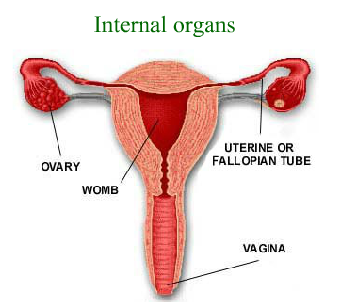
ANATOMY AND PHYSIOLOGY OF THE FEMALE REPRODUCTIVE SYSTEM
INTRODUCTION
The total process by which organisms produce offspring is called reproduction. Sexual reproduction is the union of the nuclei of the female sex cell (ovum) and the male sex cell (sperm) that results in the creation of a new individual.

INTERNAL ORGANS
Ovaries: The ovaries are a pair of small, almond-shaped organs located in the lower abdomen.
The uterine or fallopain tubes: There are two fallopian tubes, one on each side. They transport the egg from the ovary to the uterus (the womb).
Uterus: It is a muscular organ situated between the urinary bladder and the rectum. The uterus is normally in a bent forward position and about 3 inches in length in a non-pregnant woman.
Vagina: The vagina is a tube extending from the uterus to the exterior of the body.

EXTERNAL ORGANS
Clitoris: The clitoris is an organ of sensitive, erectile tissue located anterior to the vaginal orifice and in front of the urethral metaus.
Vulva: The external genitalia (organs of reproduction) of the female are collectively called the vulva.
There are two parts of vulva, first one is Labia majora which are the outer lips of the vagina and the second one is Labia minora which are the smaller, inner lips of the vagina.
 aziacademy1-Sangeetha
aziacademy1-Sangeetha